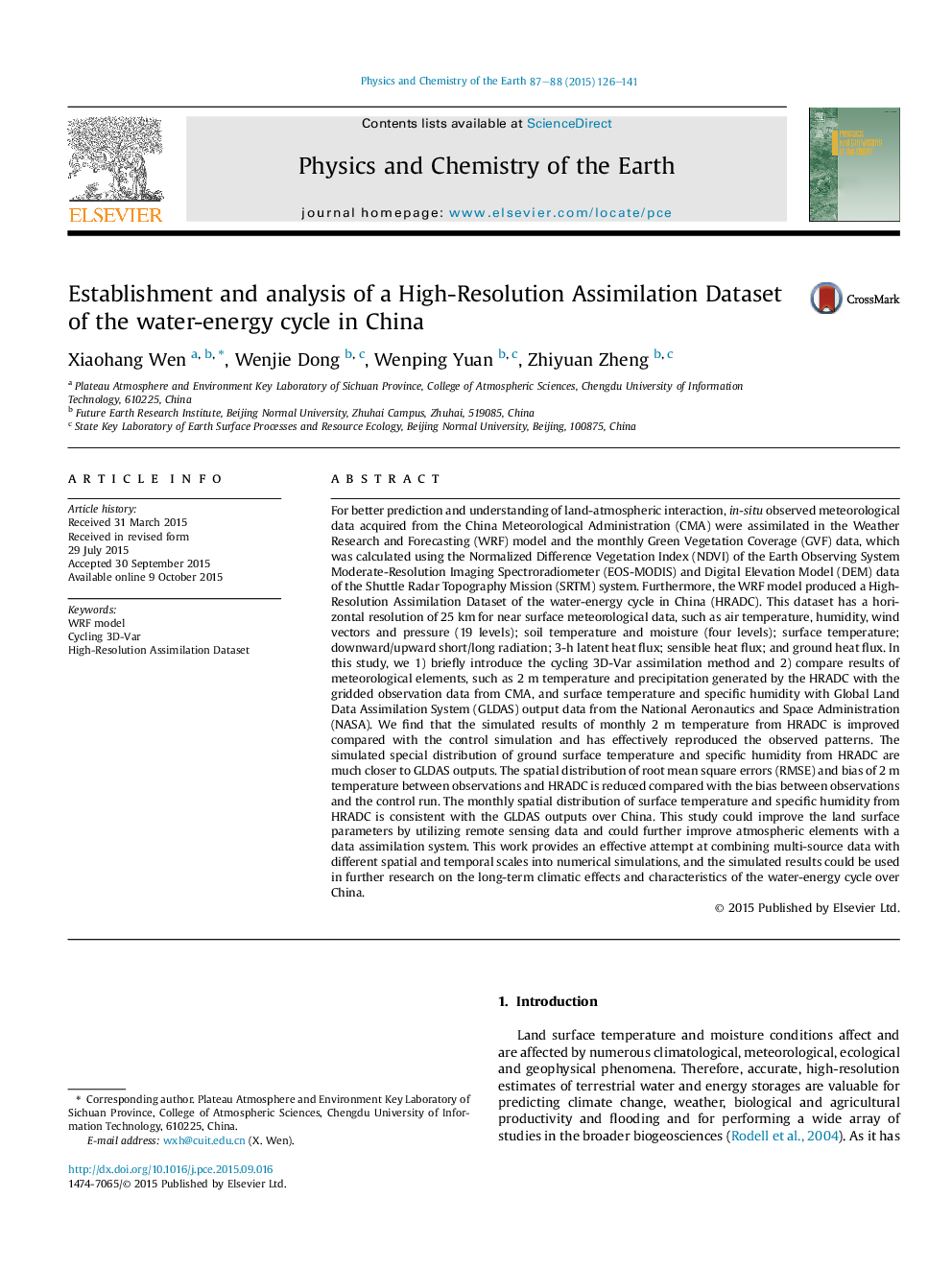| کد مقاله | کد نشریه | سال انتشار | مقاله انگلیسی | نسخه تمام متن |
|---|---|---|---|---|
| 4720918 | 1639349 | 2015 | 16 صفحه PDF | دانلود رایگان |
• A High-Resolution Assimilation Dataset in China (HRADC) is generated.
• A cycling 3-DVar data assimilation method is used in this study.
• Different spatial and temporal scales data are used in WRF model.
• The HRADC is difference from other land data assimilation systems.
• This work can help to understand the water-energy cycle in China.
For better prediction and understanding of land-atmospheric interaction, in-situ observed meteorological data acquired from the China Meteorological Administration (CMA) were assimilated in the Weather Research and Forecasting (WRF) model and the monthly Green Vegetation Coverage (GVF) data, which was calculated using the Normalized Difference Vegetation Index (NDVI) of the Earth Observing System Moderate-Resolution Imaging Spectroradiometer (EOS-MODIS) and Digital Elevation Model (DEM) data of the Shuttle Radar Topography Mission (SRTM) system. Furthermore, the WRF model produced a High-Resolution Assimilation Dataset of the water-energy cycle in China (HRADC). This dataset has a horizontal resolution of 25 km for near surface meteorological data, such as air temperature, humidity, wind vectors and pressure (19 levels); soil temperature and moisture (four levels); surface temperature; downward/upward short/long radiation; 3-h latent heat flux; sensible heat flux; and ground heat flux. In this study, we 1) briefly introduce the cycling 3D-Var assimilation method and 2) compare results of meteorological elements, such as 2 m temperature and precipitation generated by the HRADC with the gridded observation data from CMA, and surface temperature and specific humidity with Global Land Data Assimilation System (GLDAS) output data from the National Aeronautics and Space Administration (NASA). We find that the simulated results of monthly 2 m temperature from HRADC is improved compared with the control simulation and has effectively reproduced the observed patterns. The simulated special distribution of ground surface temperature and specific humidity from HRADC are much closer to GLDAS outputs. The spatial distribution of root mean square errors (RMSE) and bias of 2 m temperature between observations and HRADC is reduced compared with the bias between observations and the control run. The monthly spatial distribution of surface temperature and specific humidity from HRADC is consistent with the GLDAS outputs over China. This study could improve the land surface parameters by utilizing remote sensing data and could further improve atmospheric elements with a data assimilation system. This work provides an effective attempt at combining multi-source data with different spatial and temporal scales into numerical simulations, and the simulated results could be used in further research on the long-term climatic effects and characteristics of the water-energy cycle over China.
Journal: Physics and Chemistry of the Earth, Parts A/B/C - Volumes 87–88, 2015, Pages 126–141
